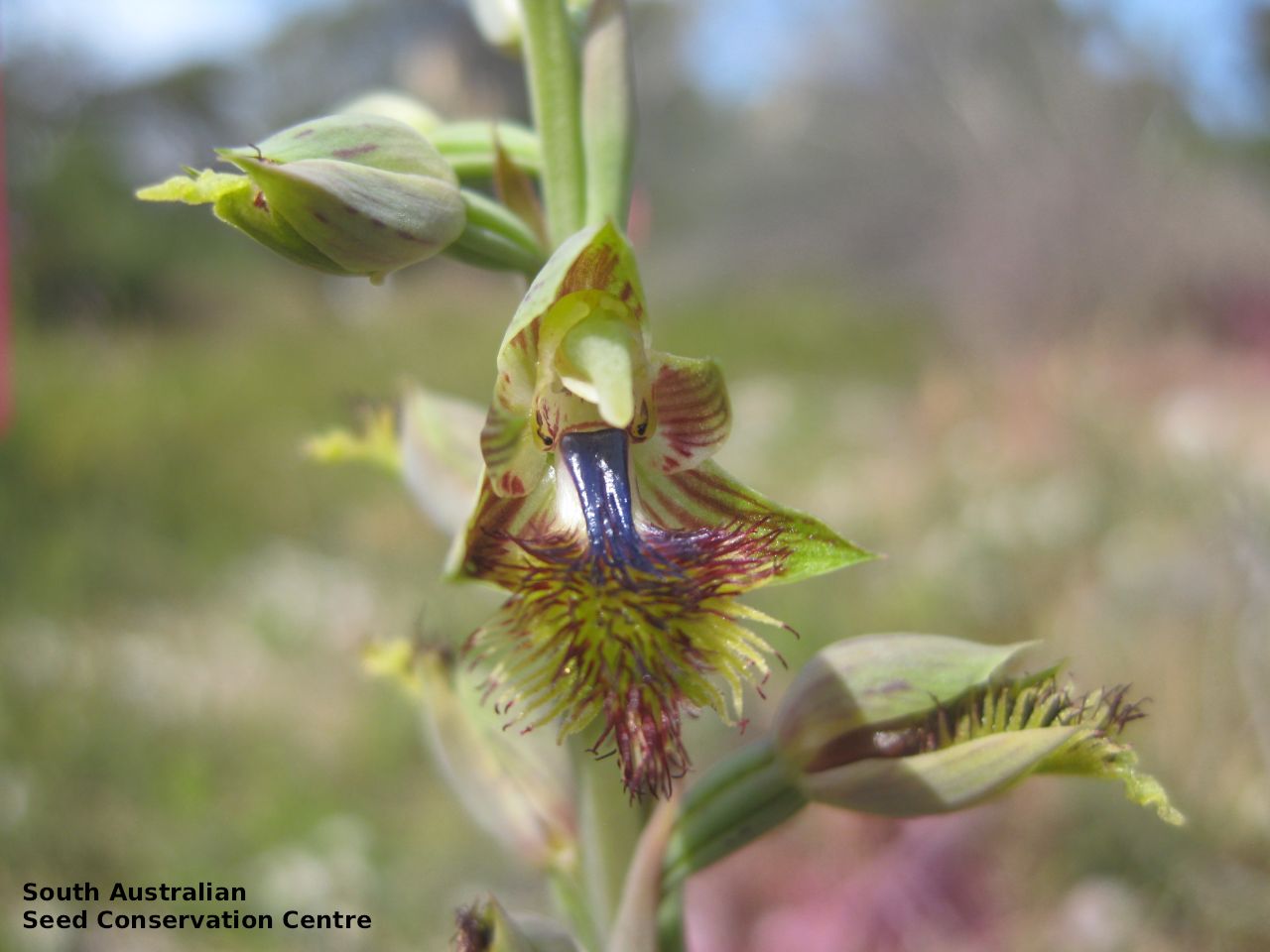
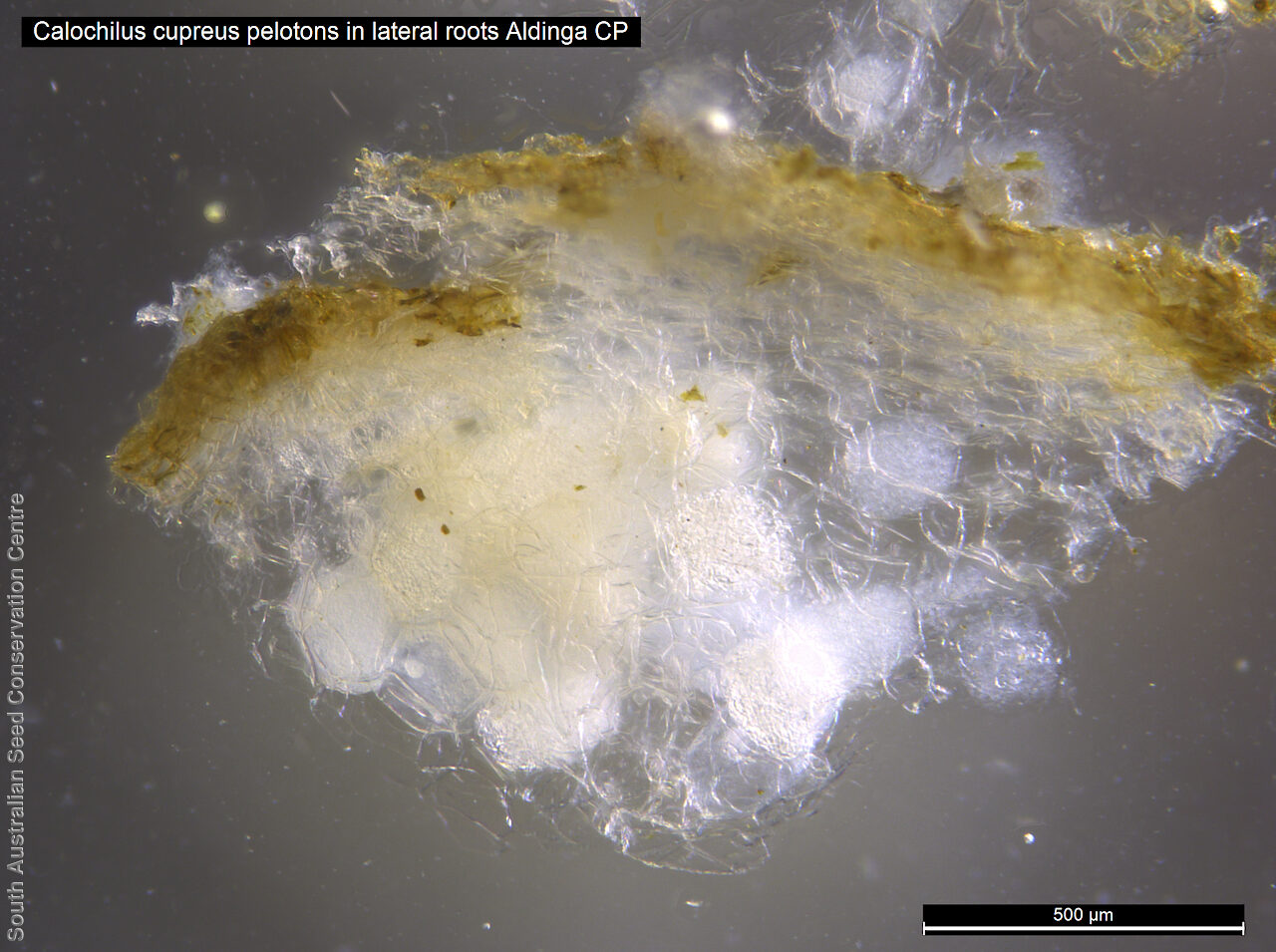
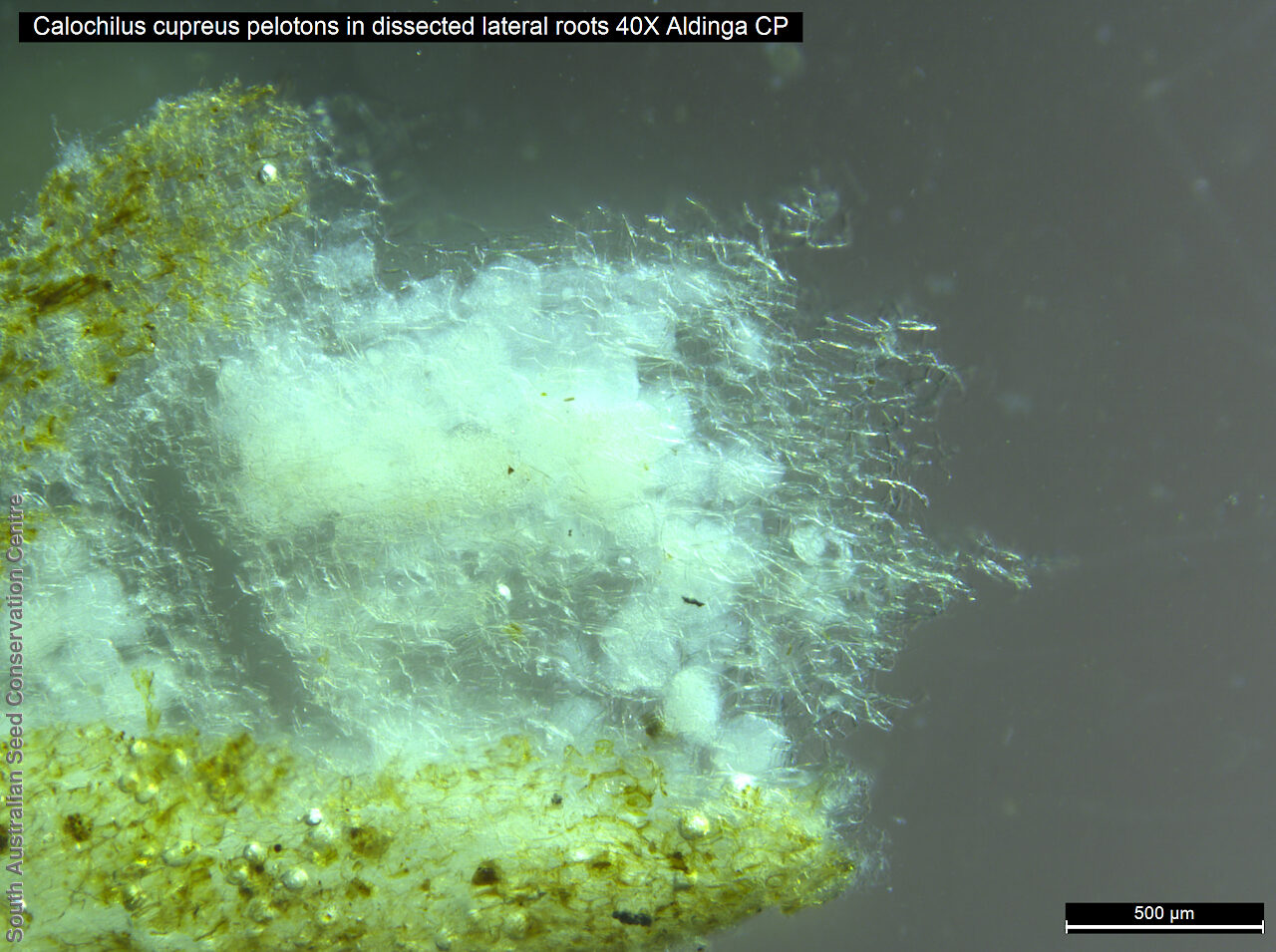
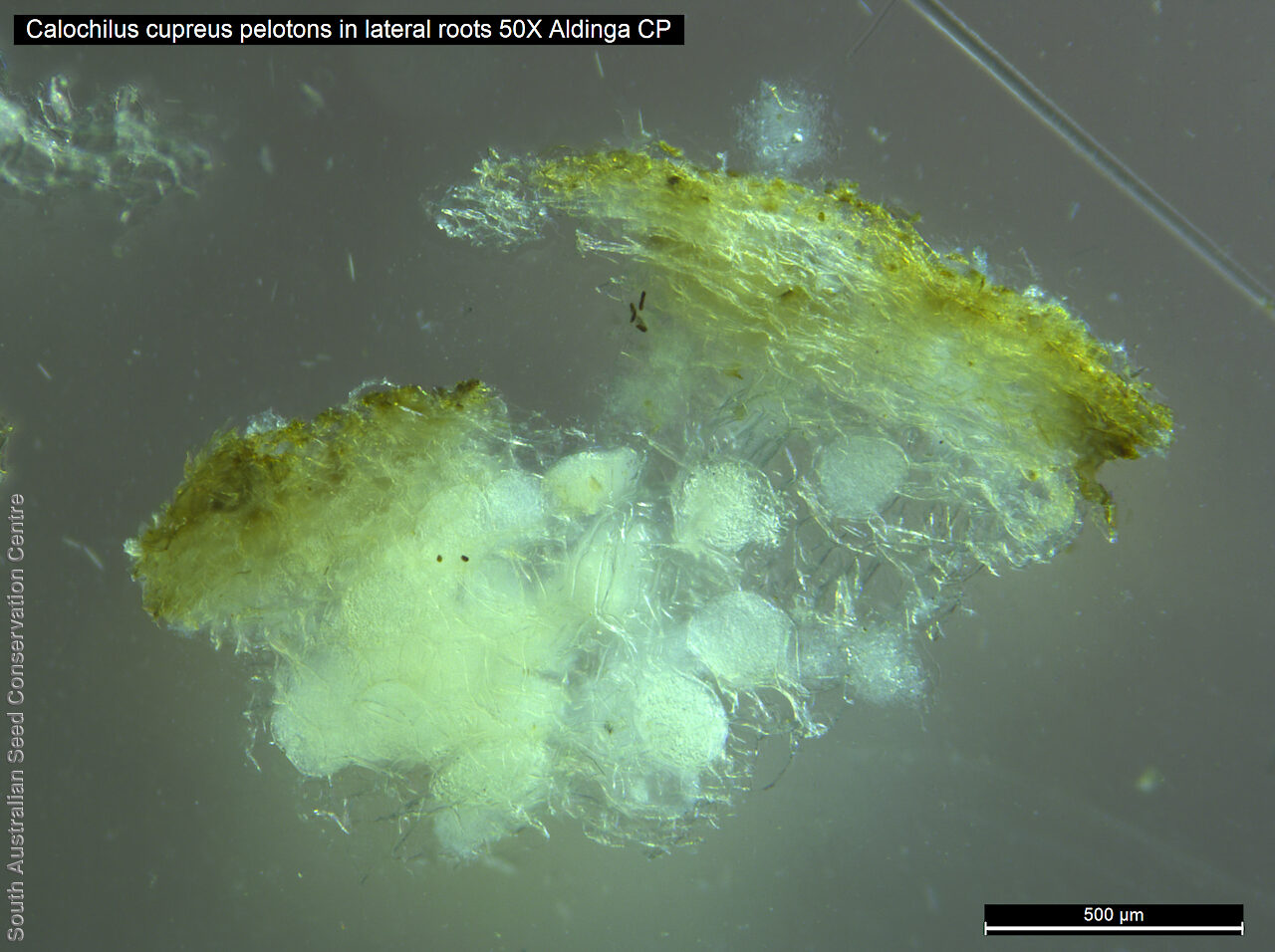
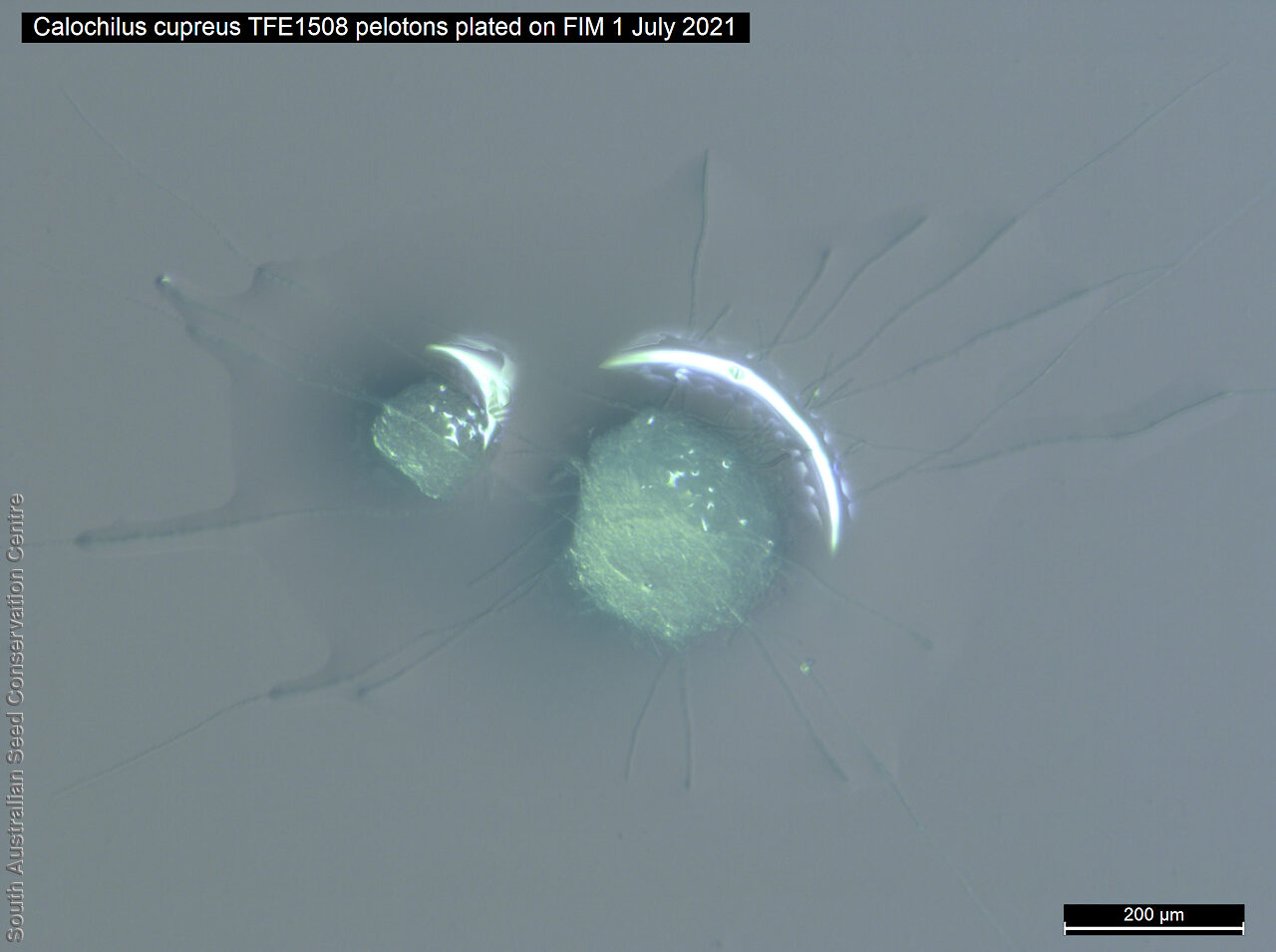
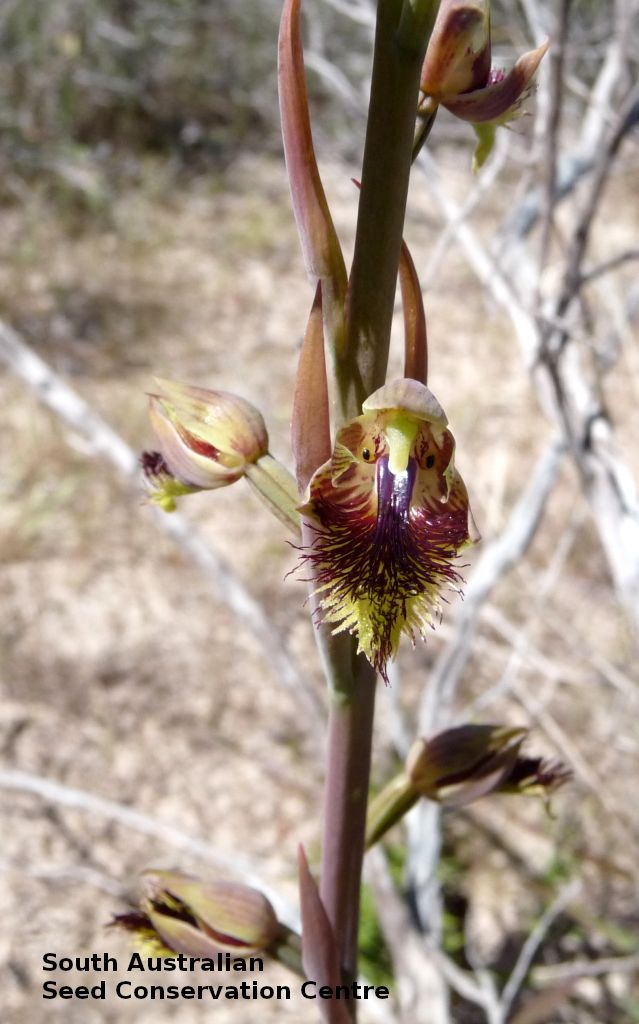
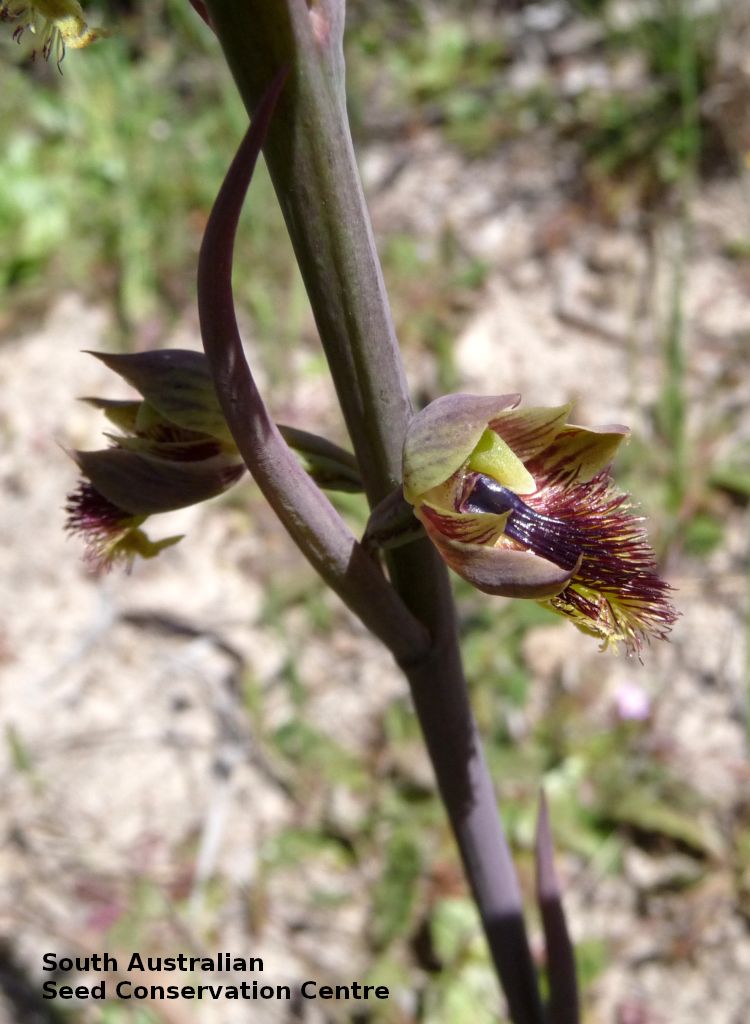
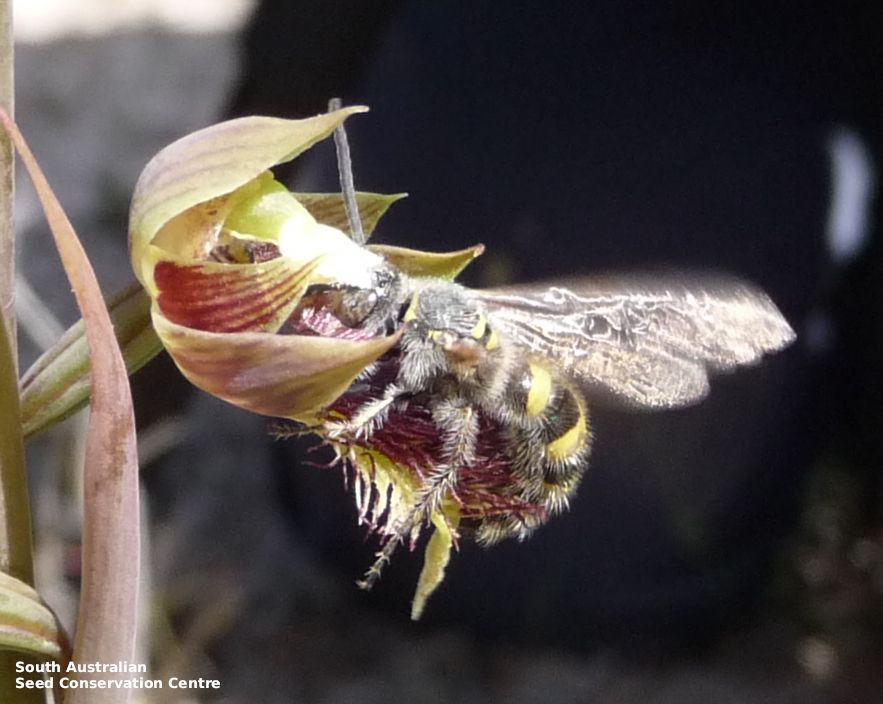
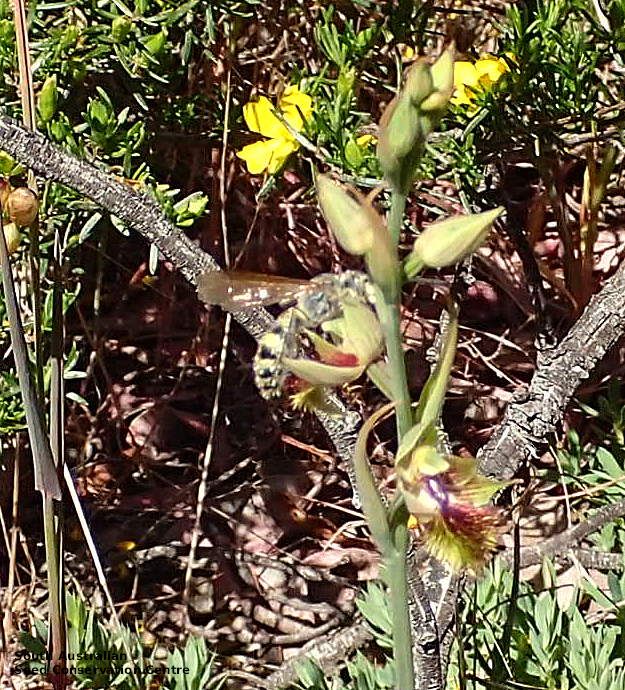
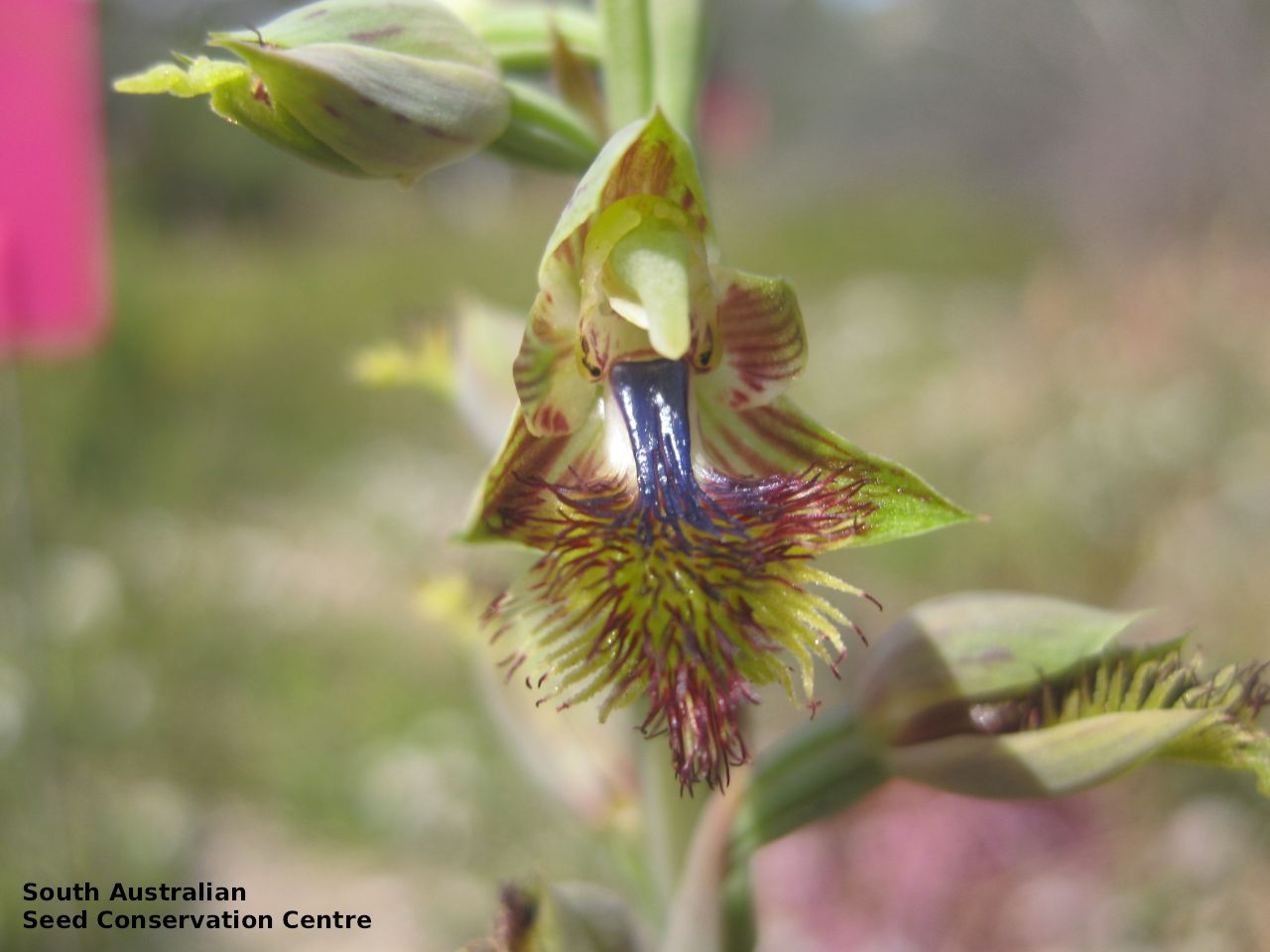
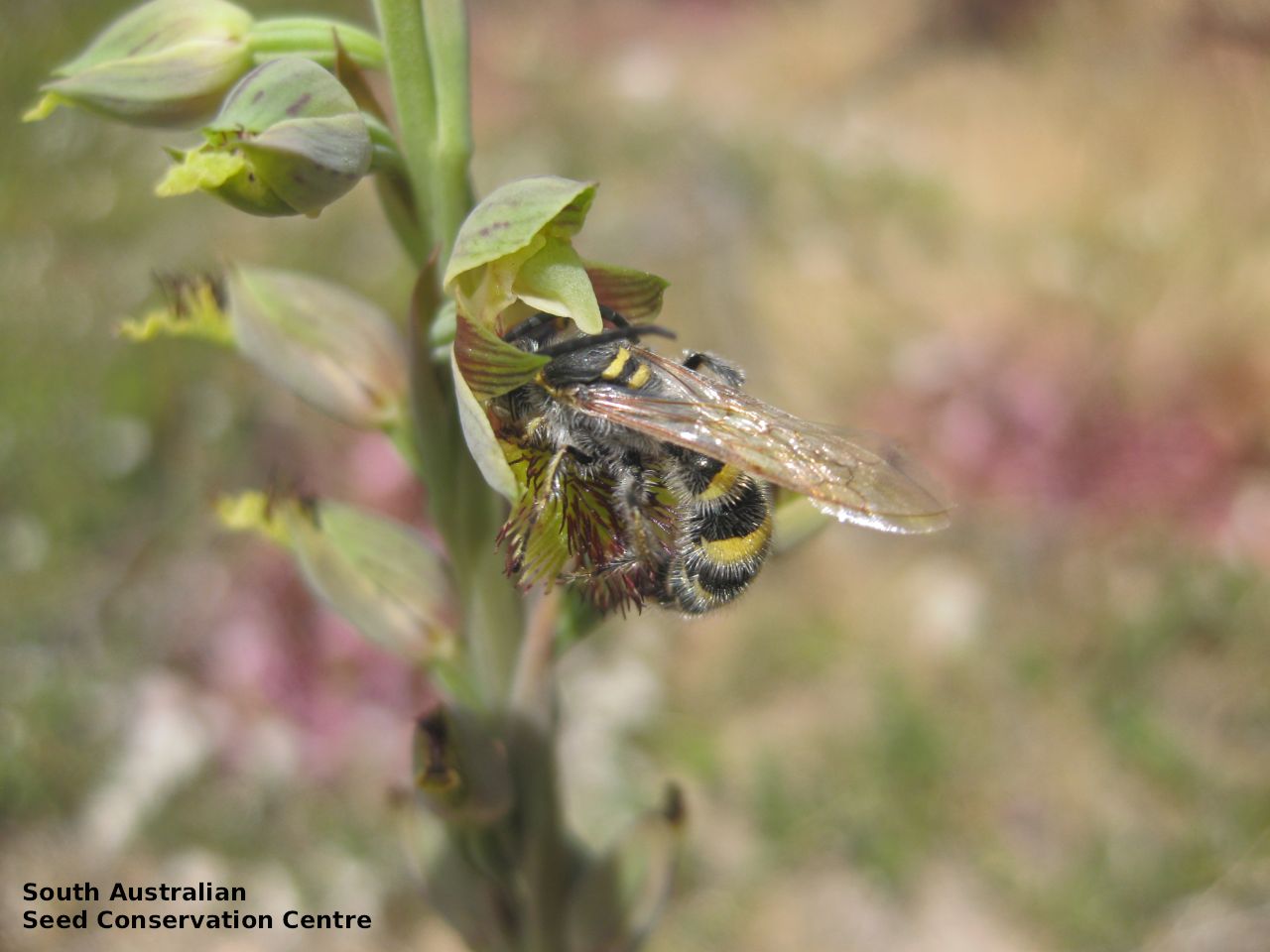
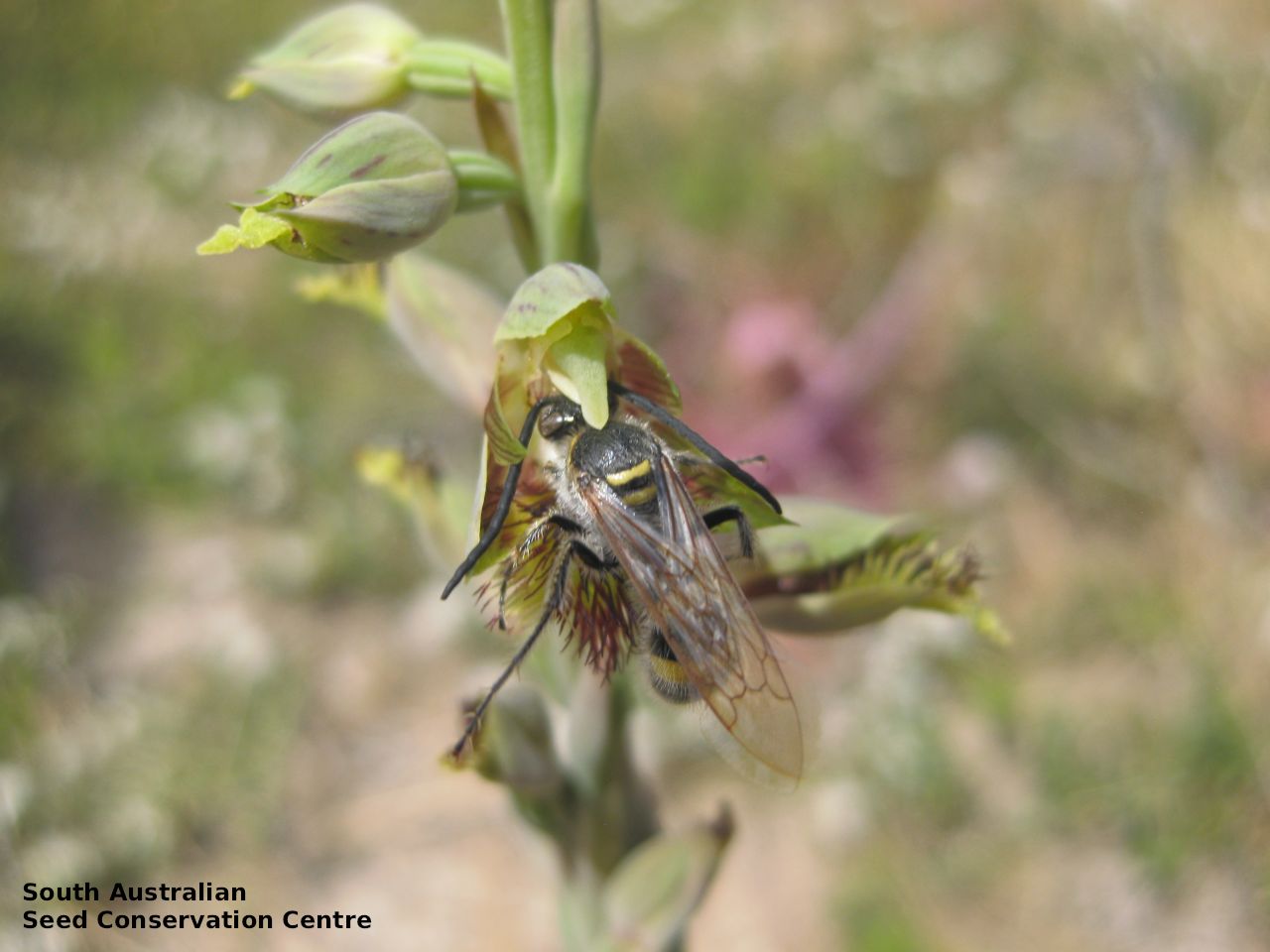
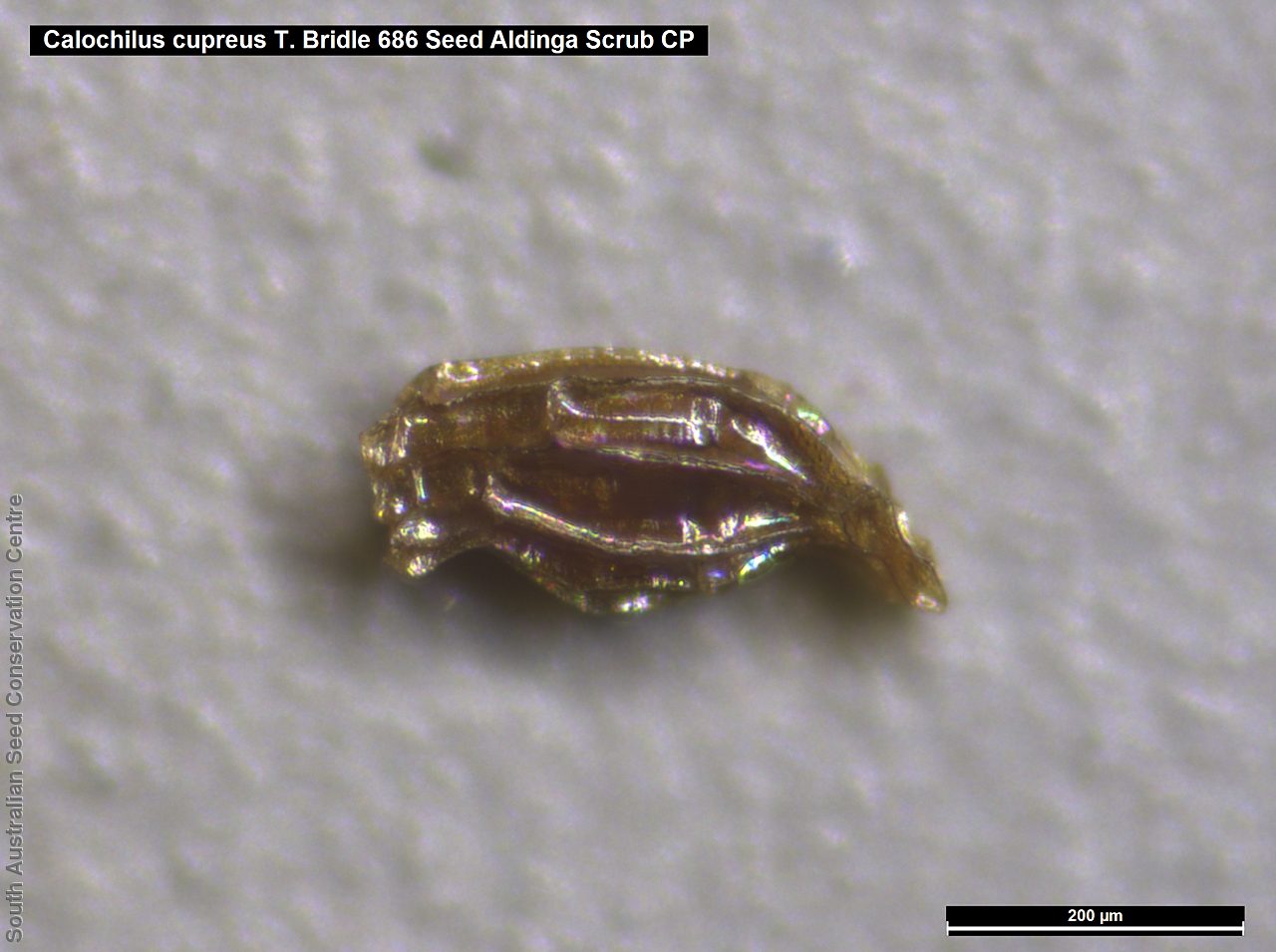
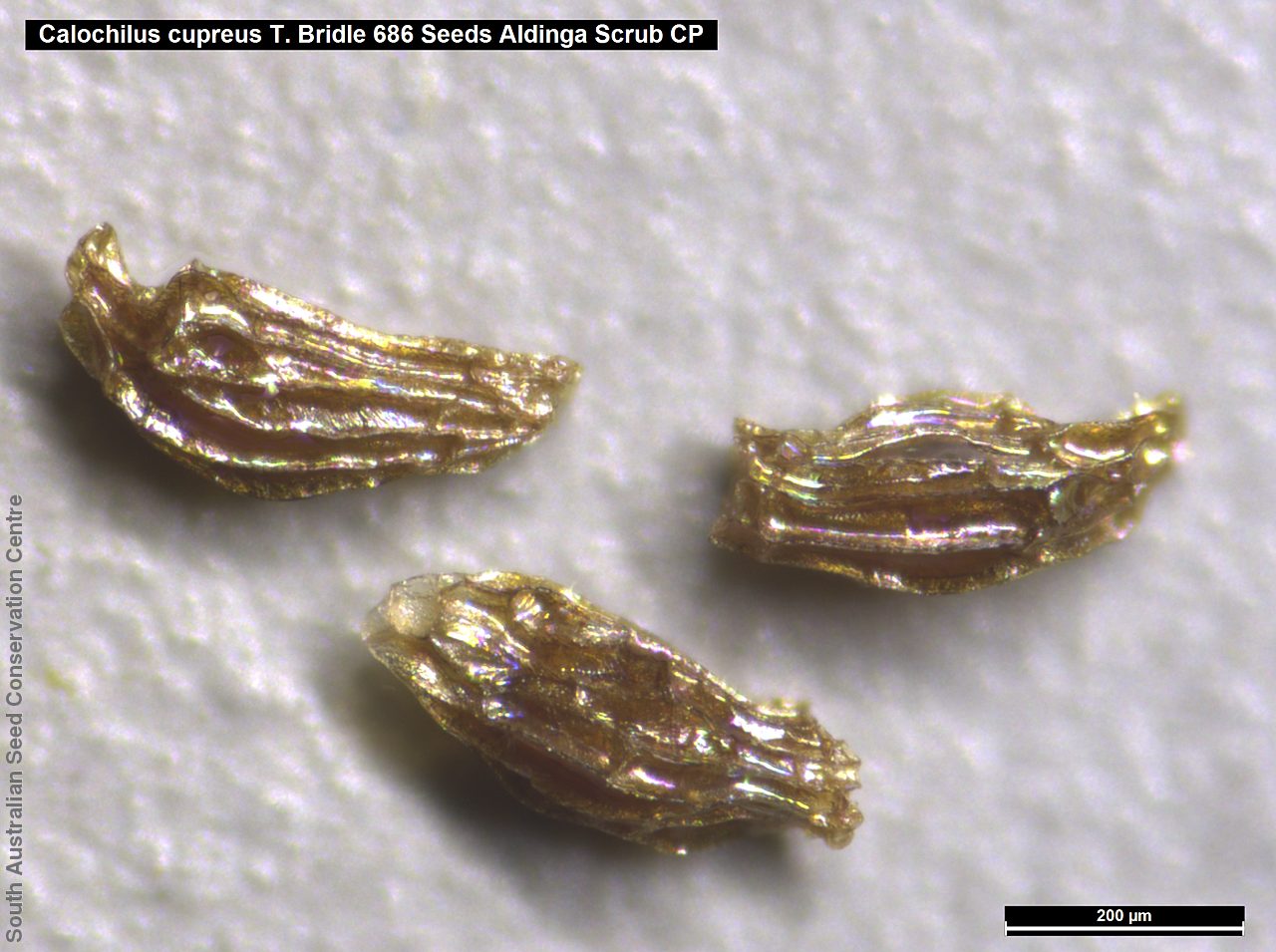
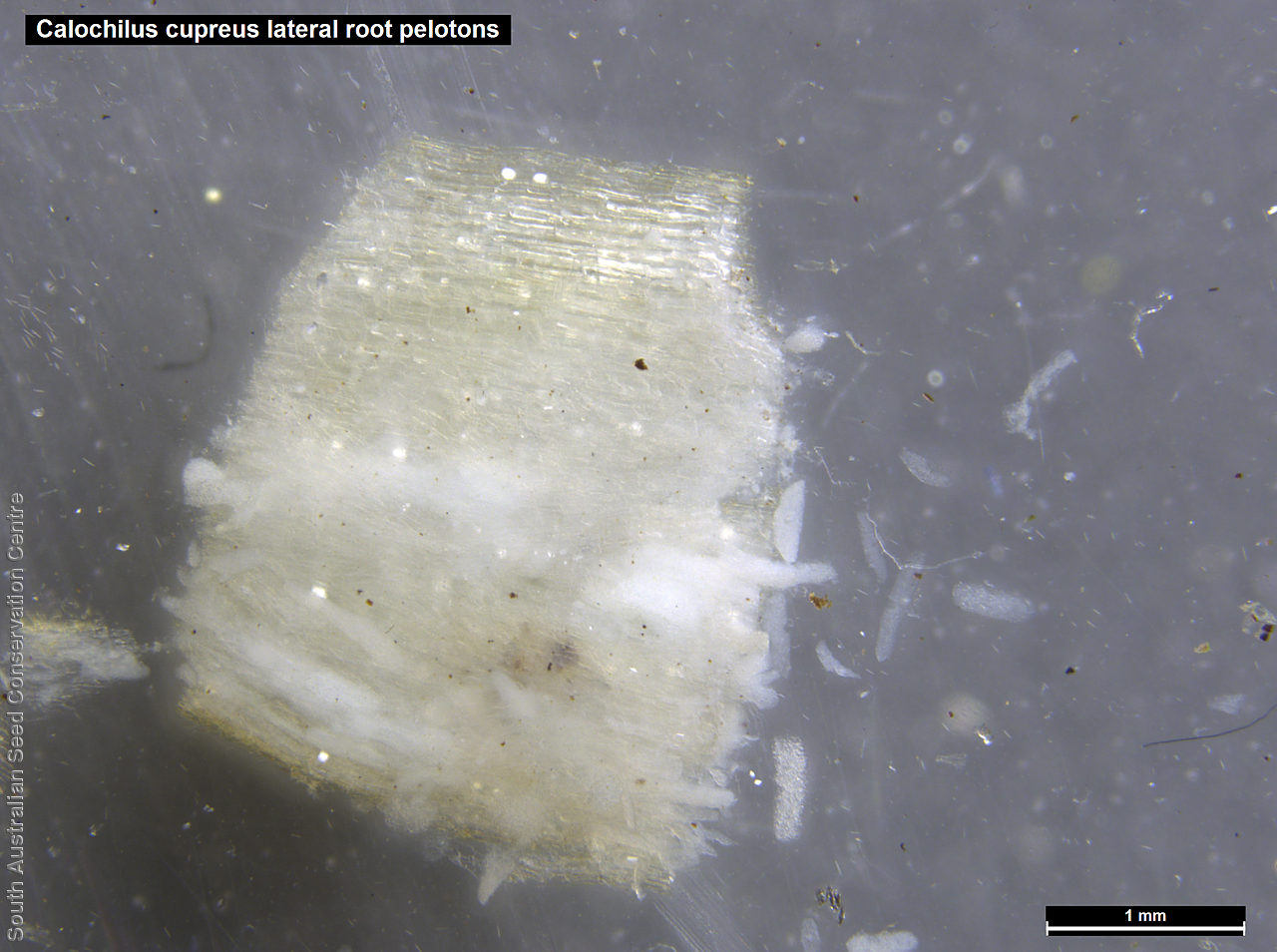
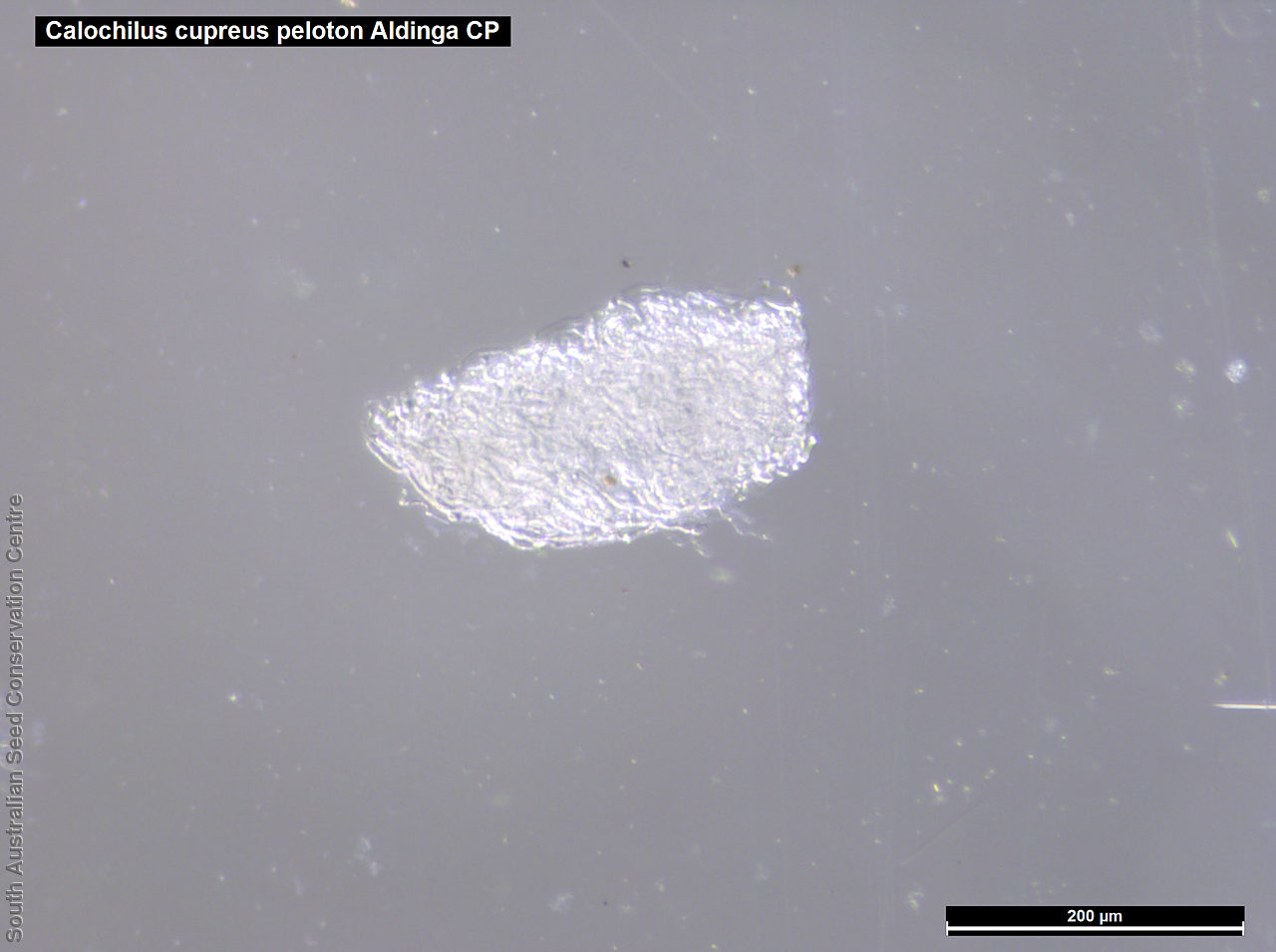
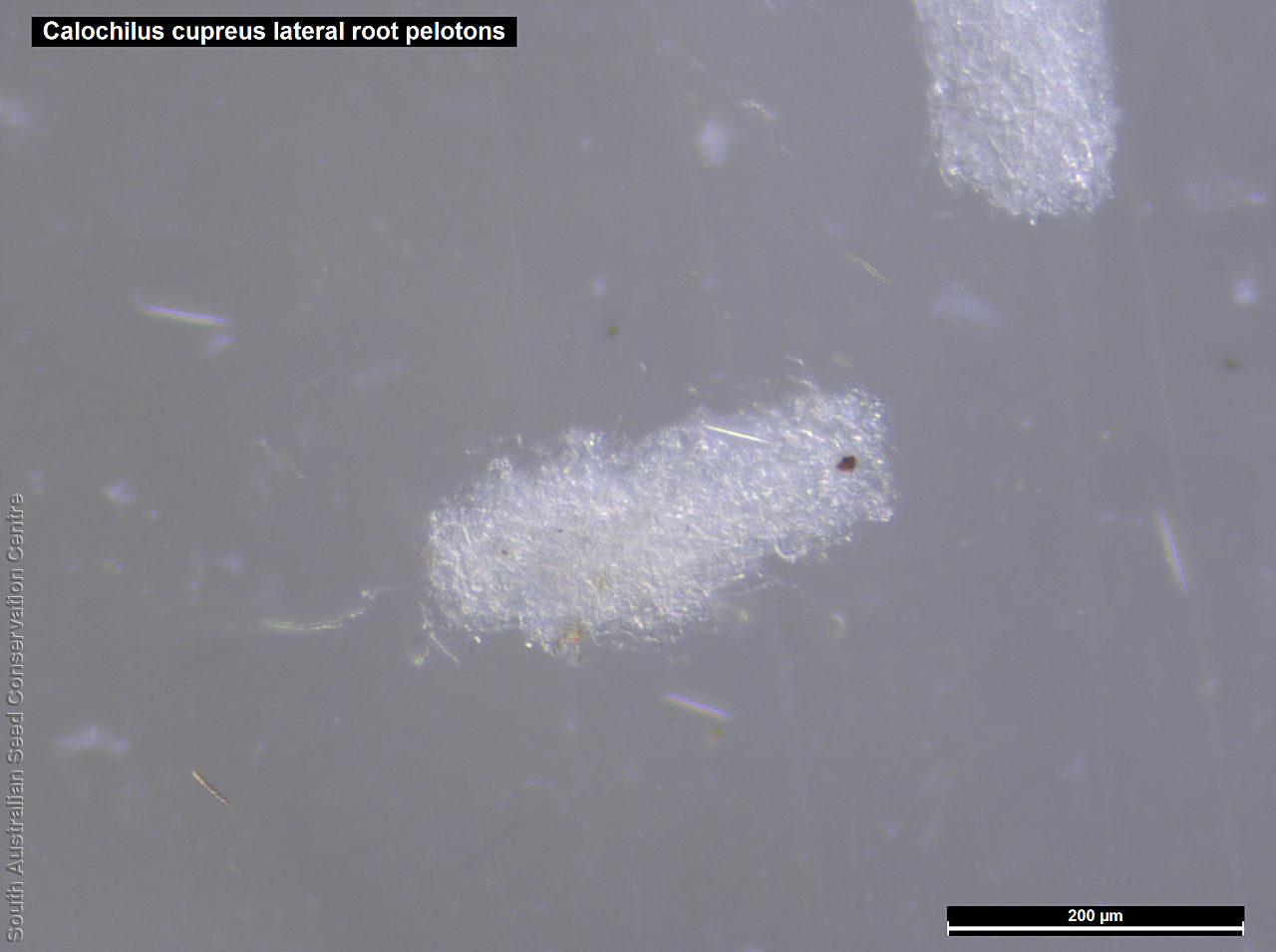
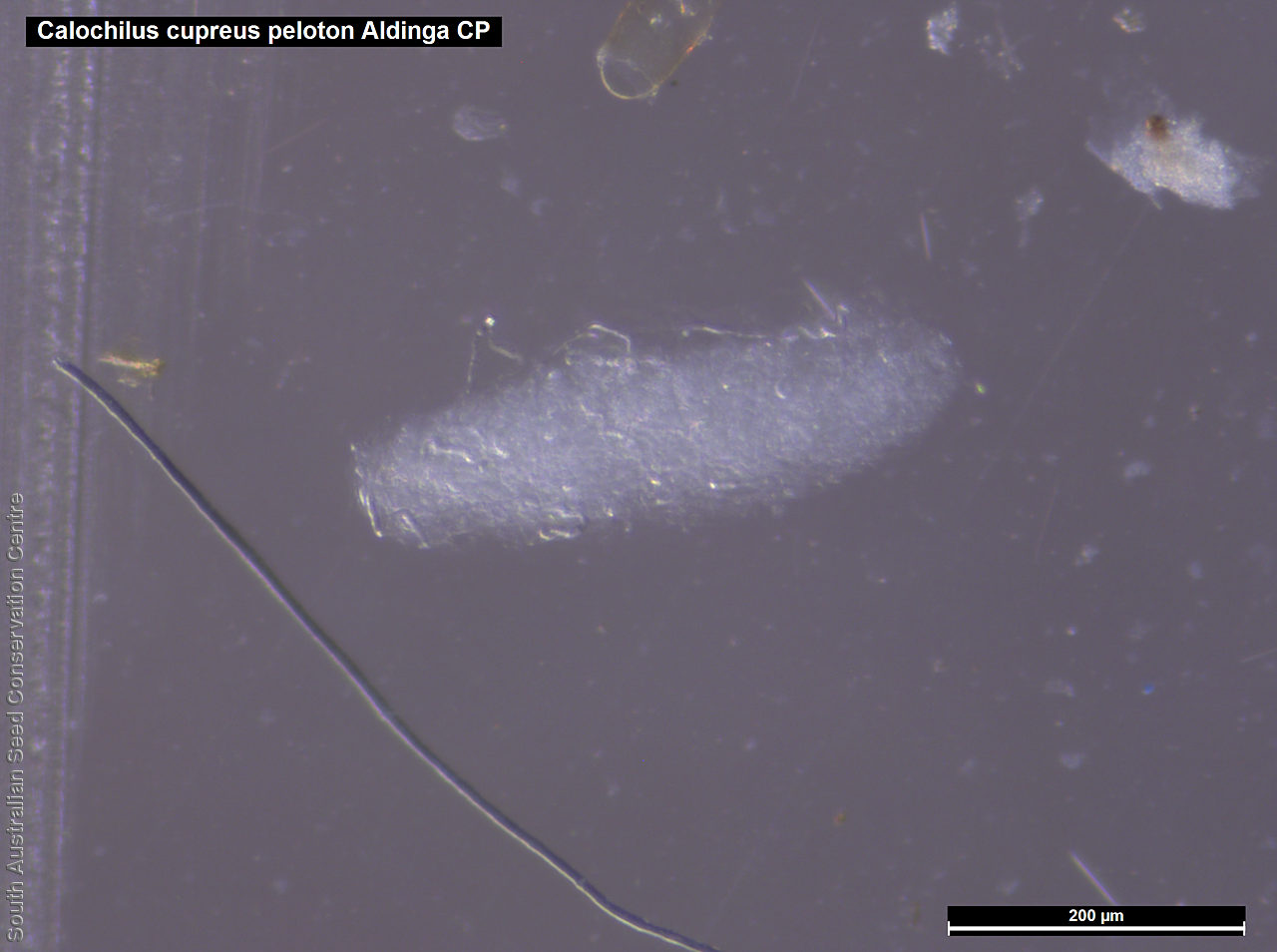
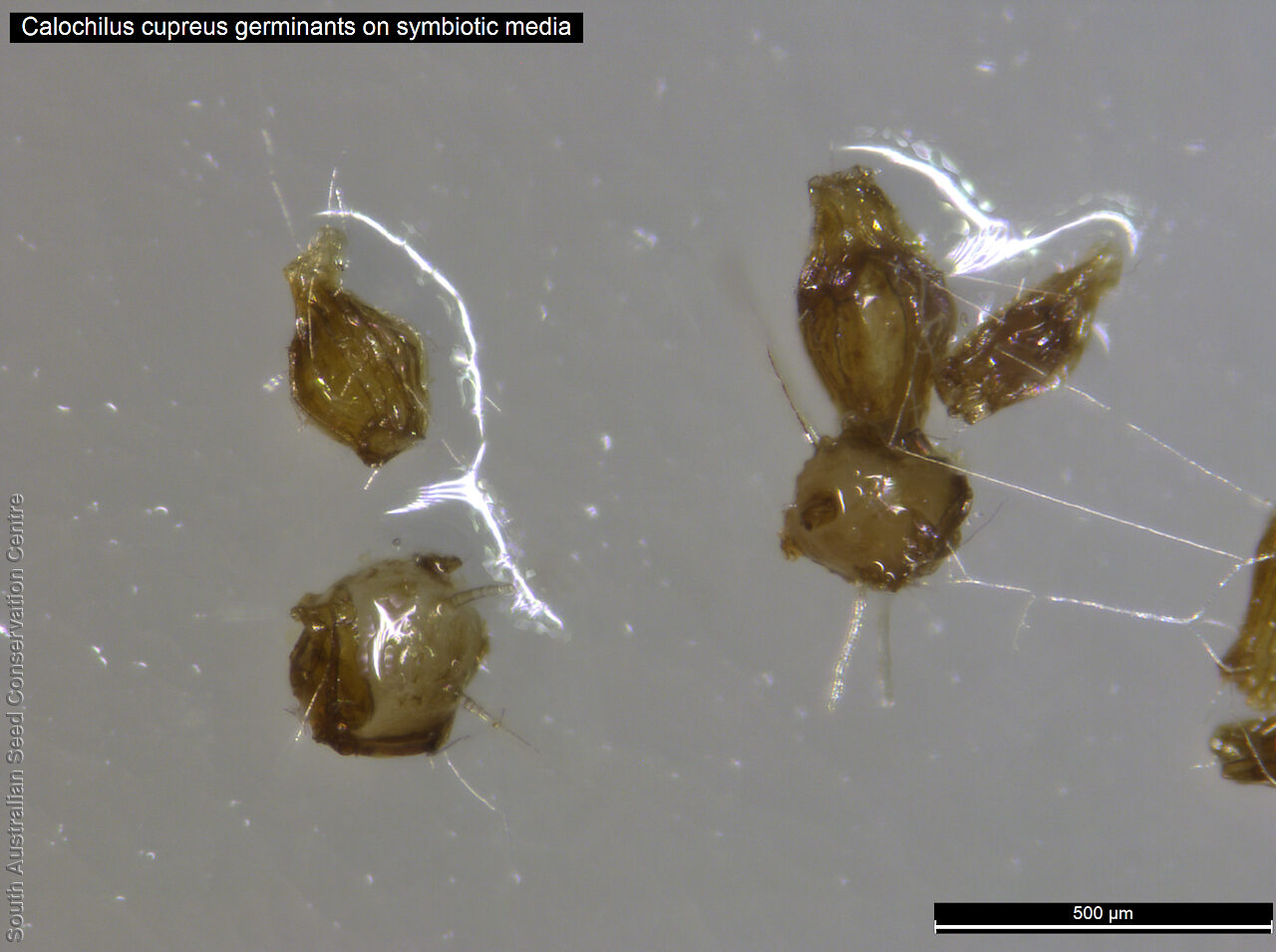
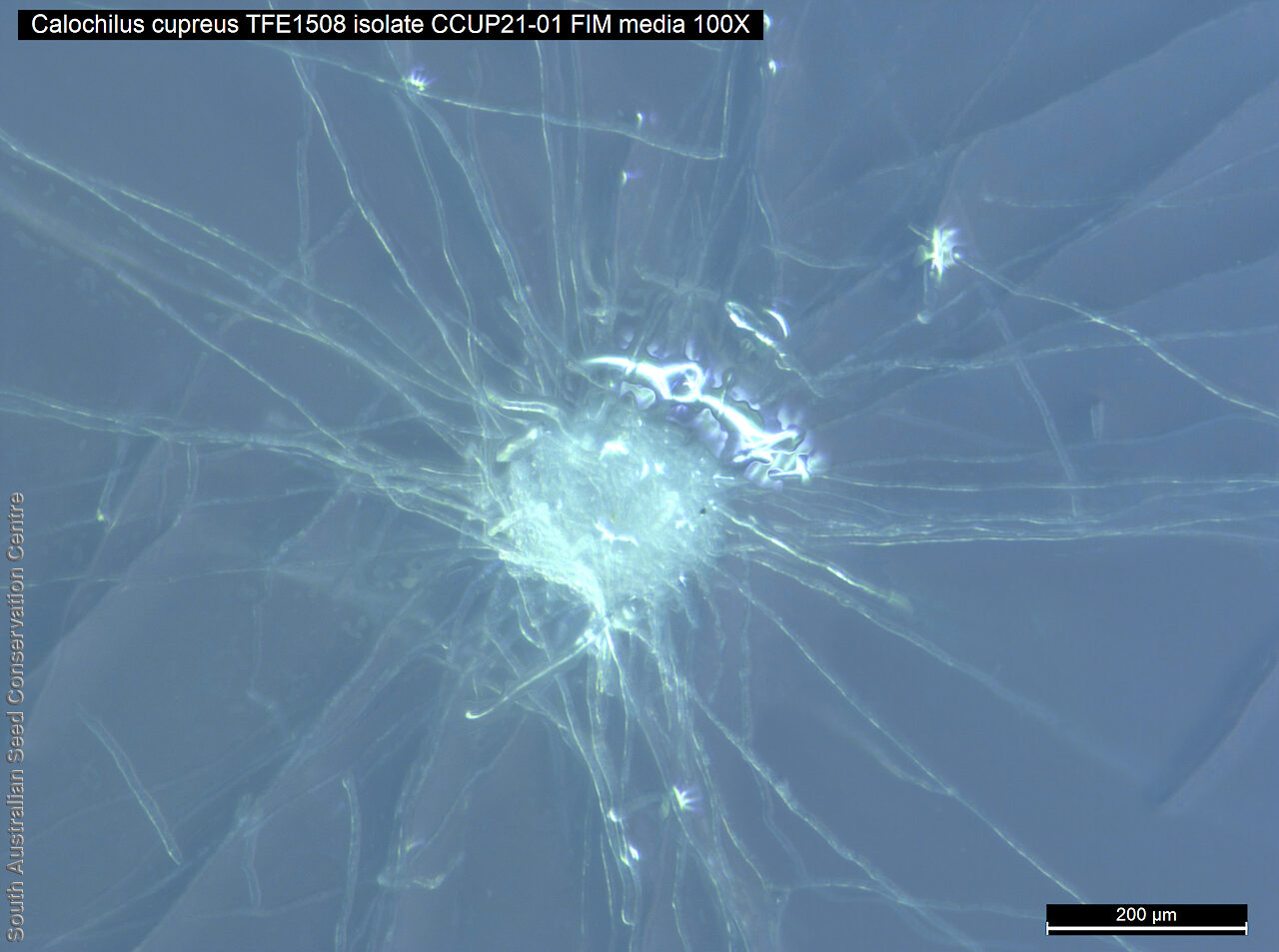
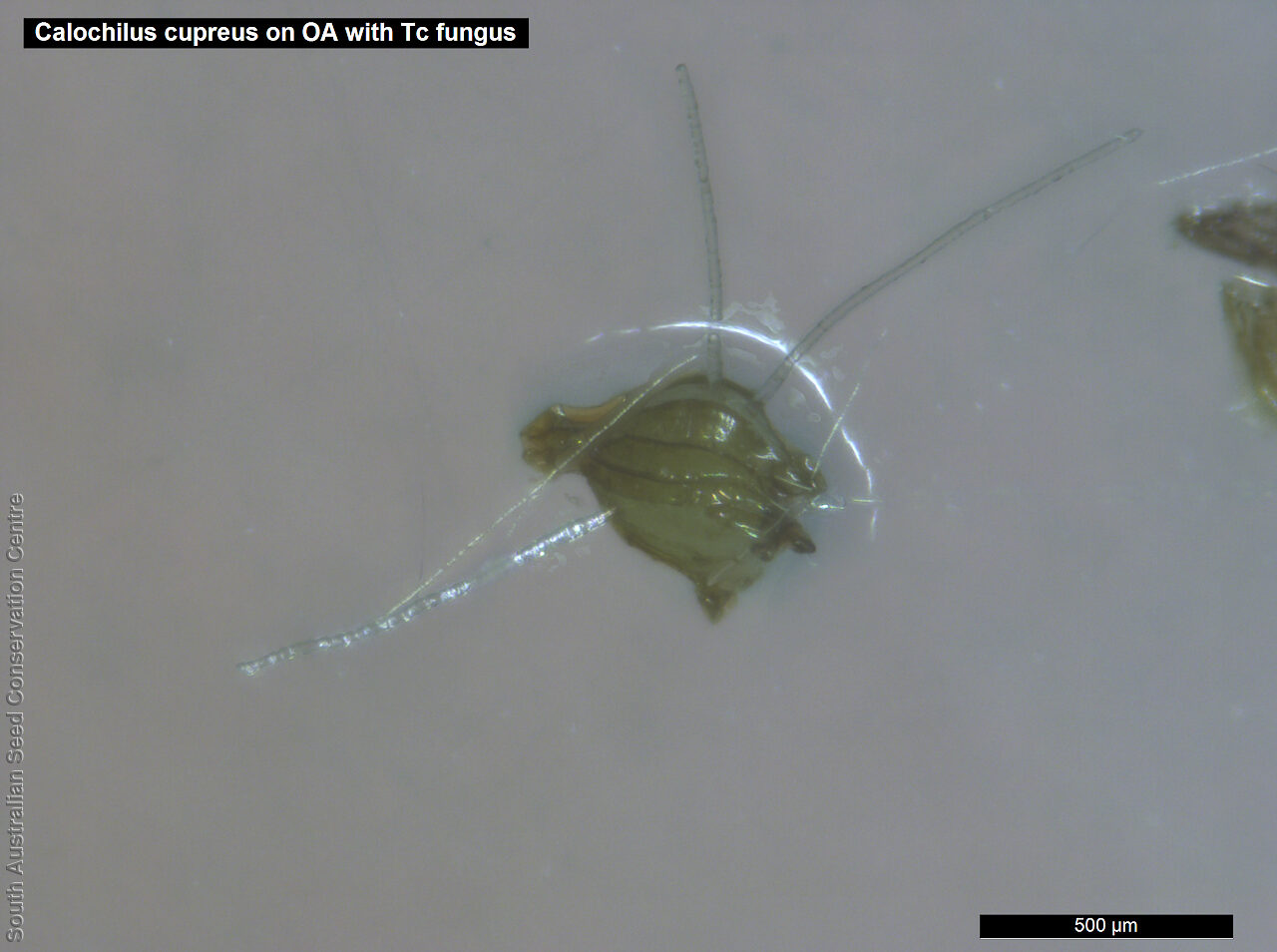
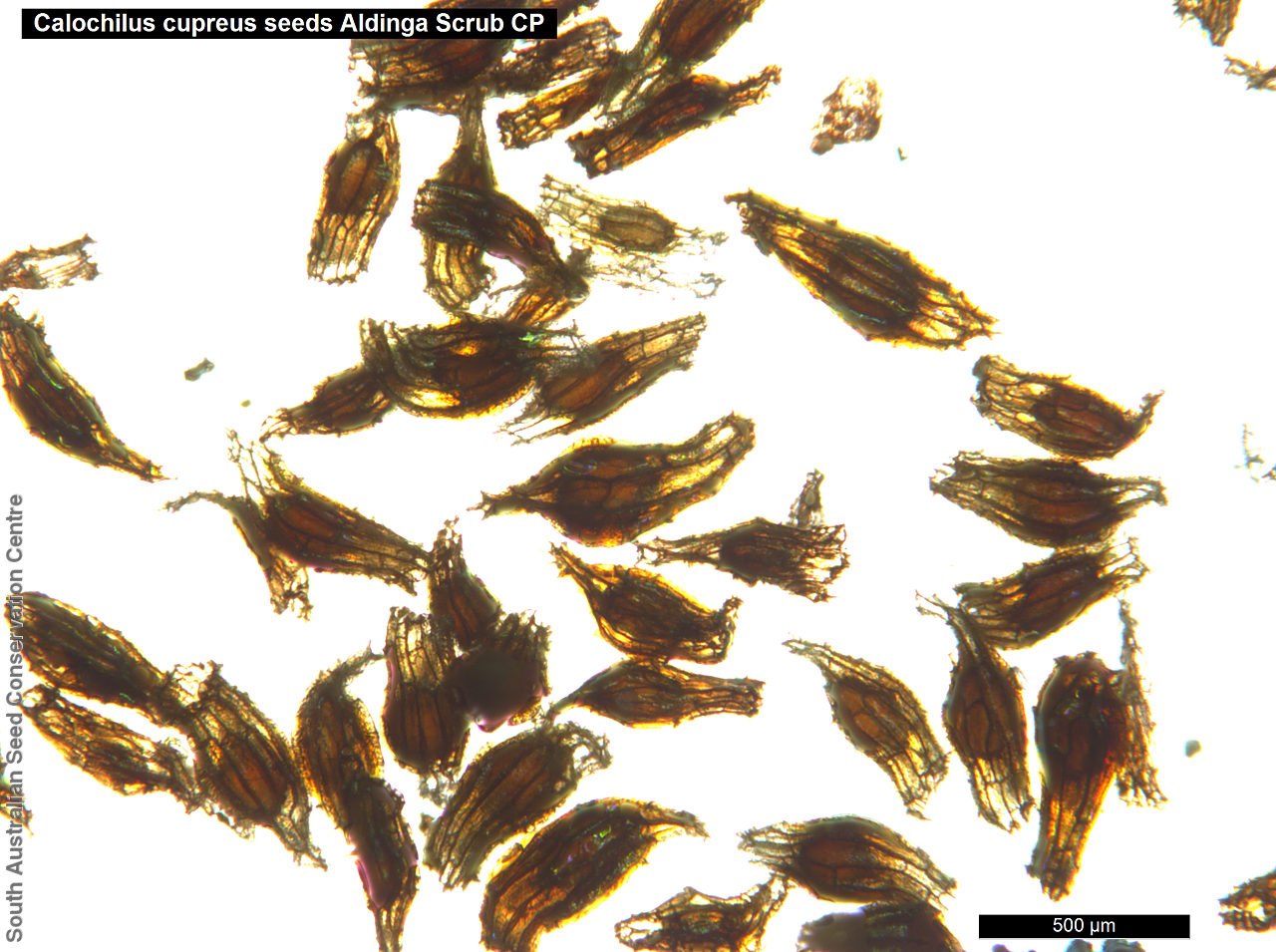
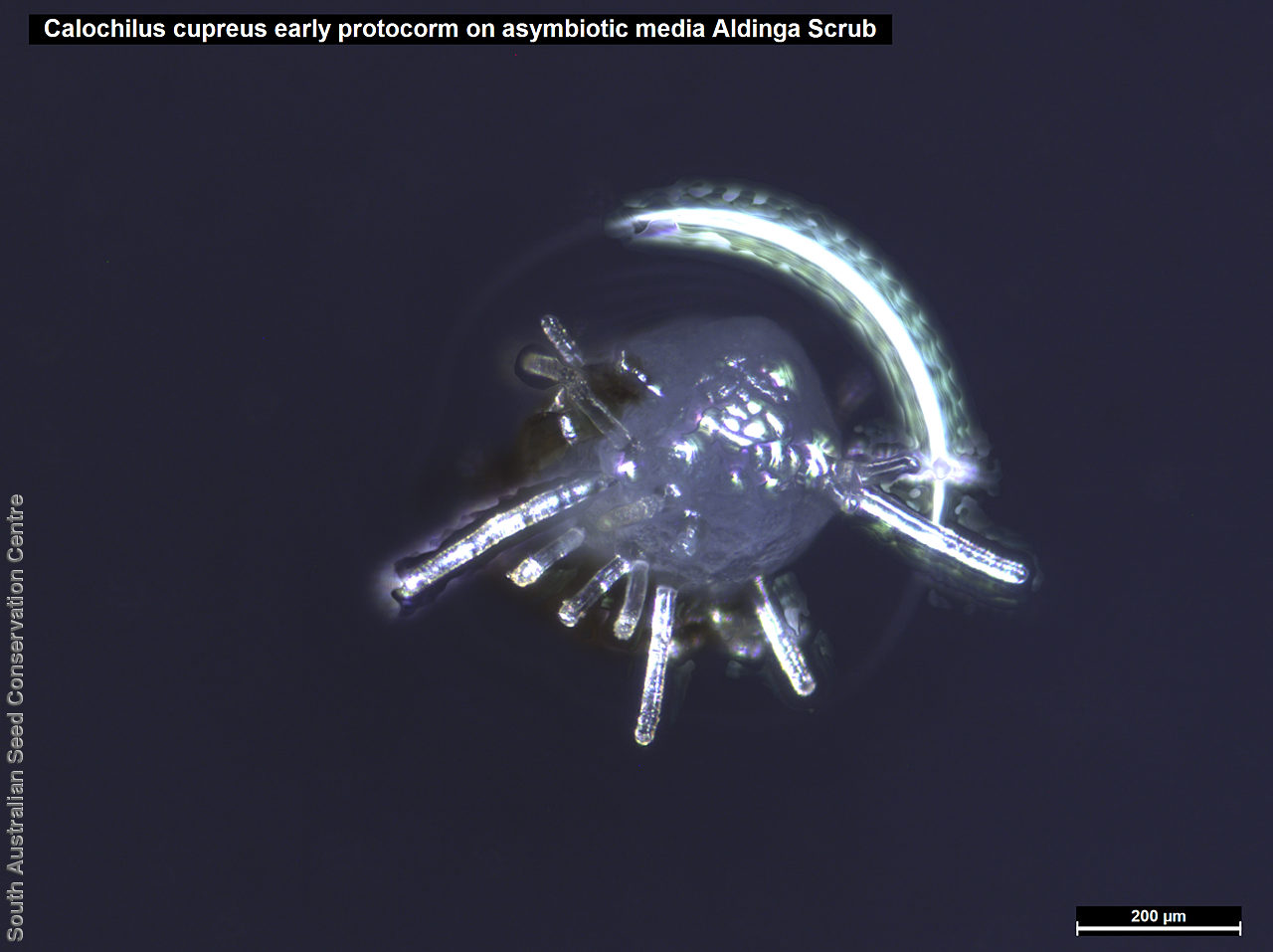
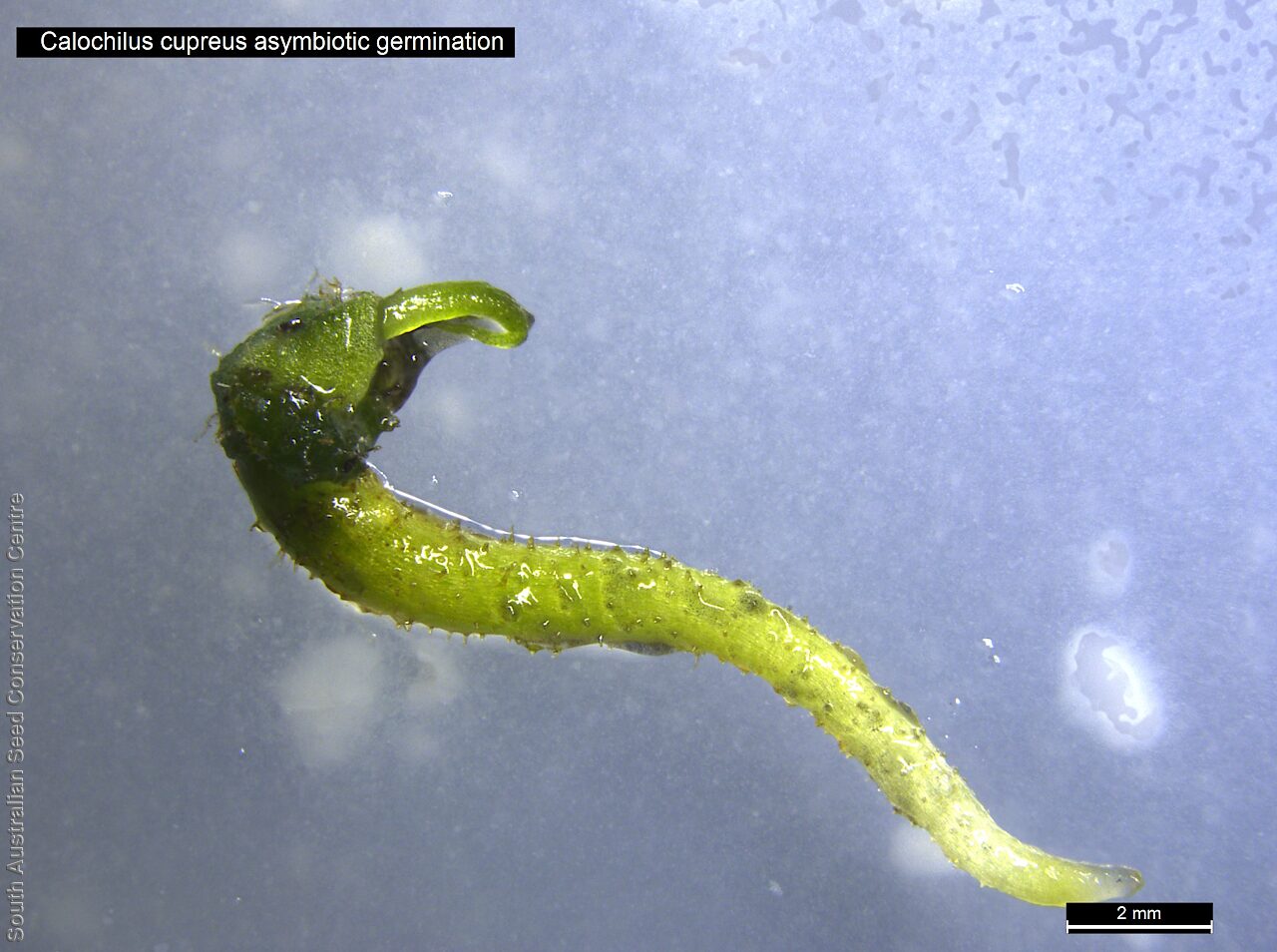
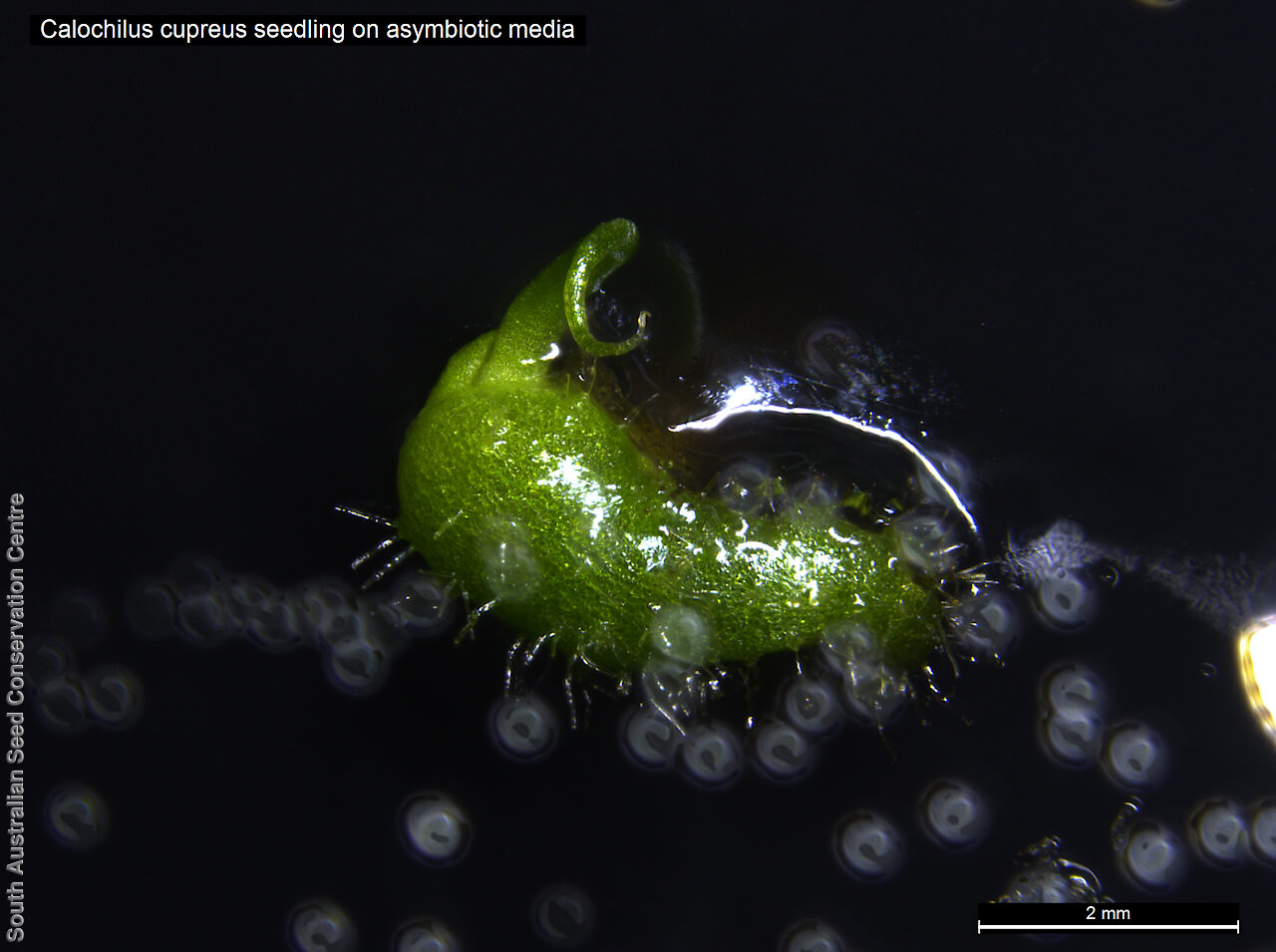

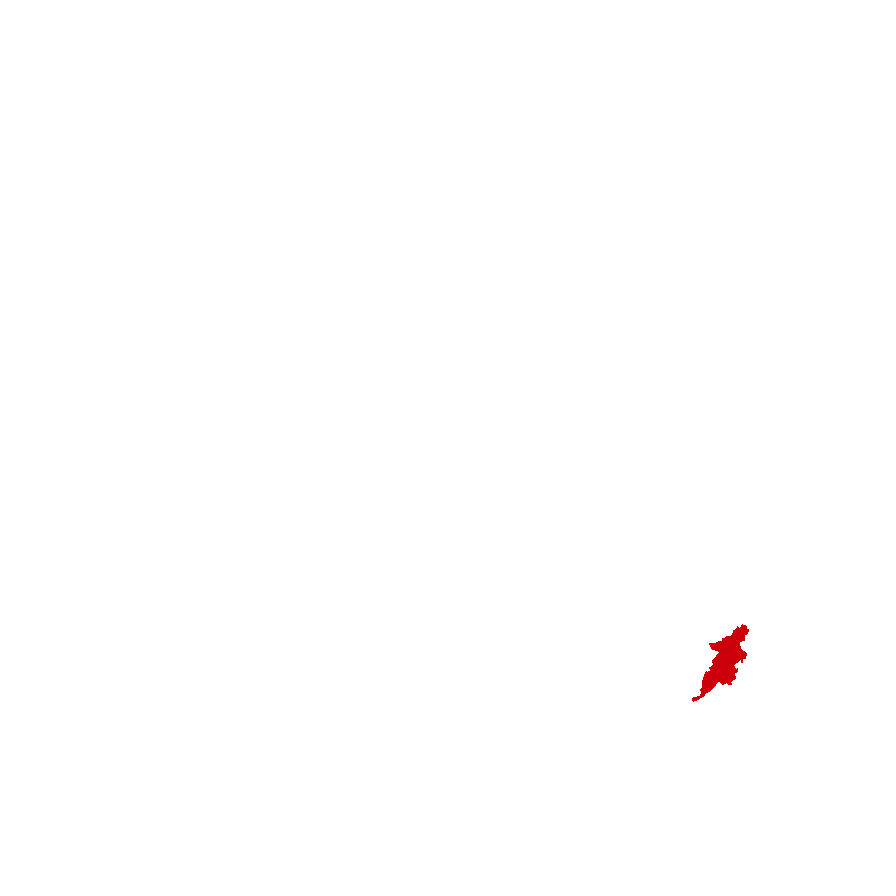
Prior names
Calochilus campestris, partly
Etymology
Calochilus from the Greek 'callos' meaning beauty and 'cheilos' meaning lip; referring to the ornamented labellum of most species. Cupreus from Latin meaning copper colour, referring to the labellum which has a coppery tint.
Distribution and status
Endemic to South Australia and found only in one reserve in the southern Mount Lofty Ranges, growing in dry coastal sands. However, there is taxonomic confusion with Calochilus campestris. Native. Very rare in South Australia.
Herbarium regions: Southern Lofty, Green Adelaide
NRM region: Adelaide and Mount Lofty Ranges
AVH map: SA distribution map (external link)
Plant description
A herbaceous terrestrial orchid with a thick-textured, narrow and channelled leaf up to 20 cm long. Inflorescence an erect slender spike to 40 cm long with numerous green with red stripes flowers, dorsal sepals are thin-textured, openly hooding the column, petals are wide around the column with heavy red streaking, lateral sepals are broadly triangular, labellum with a coppery tint and purple shiny smooth plate at the base, mid part with purple hairs, outer hairs becoming green, tipped purple. Flowering between September and November. Some useful taxonomic background about this Calochilus species is available on the Native Orchid Society of South Australia webpage https://nossa.org.au/tag/calochilus-cupreus/ Fruits are brown papery ellipsoid capsule.
Seed collection and propagation
Collect seeds between November and January. Collect fat capsules as they start to dry and turn brown. Pods will split and release the seeds quickly and will require monitoring. To increase the chances of collecting mature pods, it is recommended that a small breathable bag (ie. Organza bags) be used to enclose the developing capsules. Place the capsules in a container that will hold fine seeds and leave to dry for a few weeks or until the capsule split. Then carefully hold the capsule and tap it gently to release the seeds. Store the seeds with a desiccant such as dried silica beads or dry rice, in an air tight container in a cool and dry place, refrigerator or in liquid nitrogen. Seed germination in Calochilus species is difficult without compatible mycorrhizal fungi. More research is needed in order to understand the germination requirements in the genus Calochilus.
| Location | No. of seeds (weight grams) | Number of plants | Date collected | Collection number Collection location | Date stored | % Viability | Storage temperature |
|---|---|---|---|---|---|---|---|
| 25-Nov-2009 | M. Jusaitis Southern Lofty | 1-Nov-2016 | N/C | -80°C | |||
| 25-Nov-2009 | M. Jusaitis Southern Lofty | 1-Nov-2016 | N/C | -80°C | |||
| BGA | 24,000 (0.01 g) | 3 | 13-Dec-2016 | T.Bridle 713 Southern Lofty | 1-Nov-2017 | N/C | -80°C |
| BGA | 62,000 (0.025 g) | 2 | 13-Dec-2016 | T.Bridle 686 Southern Lofty | 1-Nov-2017 | N/C | -80°C |
| BGA | 72,200 (0.029 g) | 5 | 6-Dec-2017 | T. Bridle Southern Lofty | 30-Jun-2018 | N/C | -18°C |
| BGA | 40,300 (0.016 g) | 5 | 12-Dec-2018 | Thelma Bridle Southern Lofty | 24-Apr-2019 | N/C | -18°C |
| BGA | 323,000 (0.13 g) | 4 | 17-Nov-2019 | T.Bridle Southern Lofty | 24-Jun-2020 | N/C | -18°C |
| BGA | 547,900 (0.220 g) | 8 | 25-Nov-2020 | T.Bridle Southern Lofty | 28-Jun-2021 | N/C | -18°C |
| MSB | 398,500 (0.160 g) | 1 | 21-Nov-2020 | T.Bridle Southern Lofty | 28-Jun-2021 | N/C | |
| BGA | 1,459,500 (0.586 g) | 15 | 2-Dec-2021 | Aldinga Scrub CP Southern Lofty | 10-Aug-2022 | N/C | -18°C, -80°C |
| BGA | 823,000 (0.330 g) | 15 | 28-Dec-2022 | Aldinga Scrub CP Southern Lofty | 21-Jun-2023 | N/C | -18°C, -80°C |
Number of plants: This is the number of plants from which the seeds were collected.
Collection location: The Herbarium of South Australia's region name.
% Viability: Percentage of filled healthy seeds determined by a cut test or x-ray.